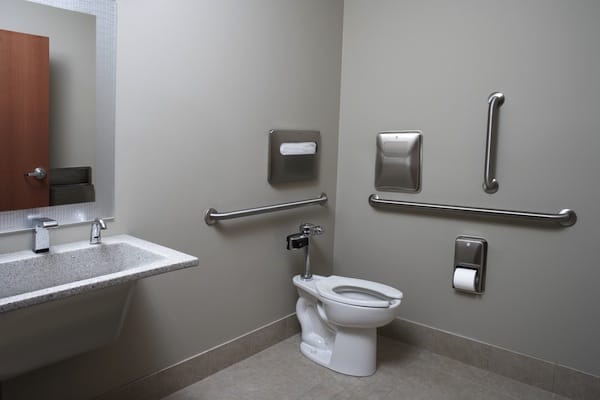Client restrooms are something that needs to be clean and more importantly, accessible for everyone to use. As a provider for your clients, it’s important to do everything you can to adapt existing bathrooms to make them more accessible or if they’re being built from scratch, to ensure they tick off all the relevant necessities needed.
In a diverse and equality-led world, it’s often the small changes that make a big difference to those who need it. Here’s how to help ensure your client’s restrooms are more accessible.

Make your flush handles access-friendly
First and foremost, the flush handles need to be access-friendly. It’s something that’s often not thought about, especially for those who don’t need to think about needing such accessible-friendly fixtures.
However, the right flush handle is going to help every one of all access-needs, to ensure they flush the toilet with success. If there are any existing toilets that have less than friendly flush handles, consider changing these immediately. It’s a quick fix that will surely make all the difference.
Install railings for those who need support
Railings are a great way to provide those who need support when it comes to mobility in the toilet. Getting up or sitting down on the toilet might prove challenging for some, which is why it’s worth adding in railings for those who need it.
A railing manufacturer is worth outsourcing to ensure you’ve got the very best in stability and durability when it comes to railing installations. They can also come in handy for those client restrooms that also have shower cubicles available.
Use non-slip mats in showers
An access need which is also a general need in wet floor environments is non-slip mats. Not having anything on the floor of shower cubicles can be dangerous and as a result, might cause injury to employees or anyone who might wish to use the shower cubicles in your client’s building.
Install a raised toilet seat
Raised toilet seats don’t often get considered but these again, can be helpful for those transferring from a wheelchair or who might have problems squatting down to the usual position of a toilet seat.
Even for those who don’t need access needs, a raised toilet seat is an advantage. Make sure that all toilet cubicles with toilet seats are raised. This doesn’t mean you need to move the position of the toilet bowl itself, just add height through the toilet seat instead.
Add in a pull cord for emergencies
Finally, most client restrooms should already have these in place but they may only be available in disabled toilets. A pull cord might be better to have in every toilet, just in case anyone gets into trouble.
Pull cords are handy in emergencies and can alert those in building ops or in reception to get help to this area quickly.
Helping improve the accessibility of a business premise is important. So with that being said, use these tips to help make your client’s restrooms more accessible for years to come.




Join the conversation: